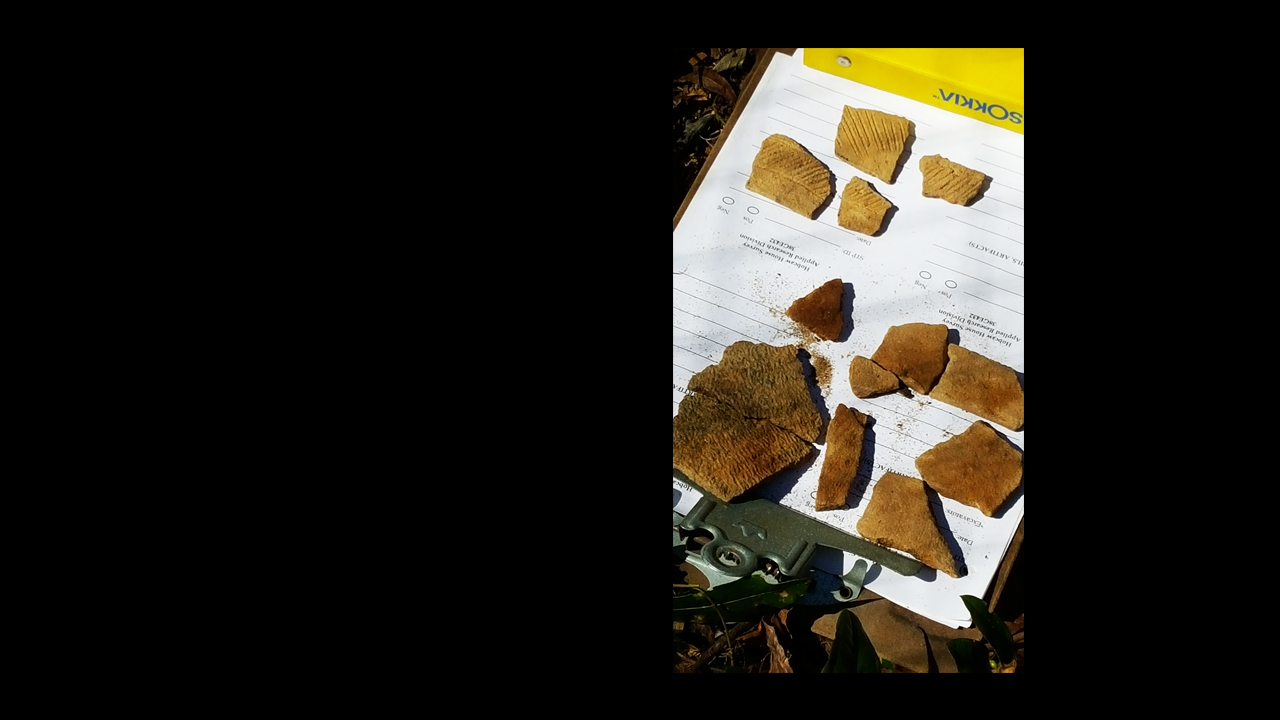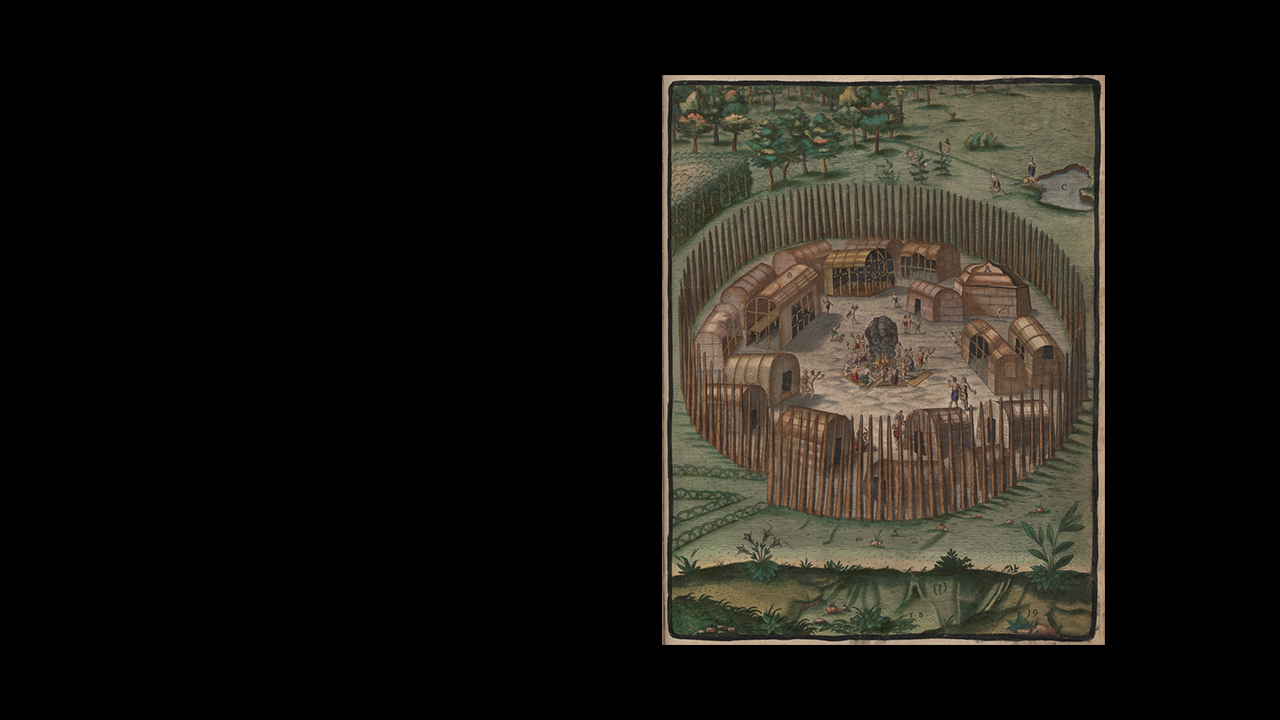 Between The Waters
Between The Waters
- Scholar: Karen Smith Trail - Native Americans and Colonization
The archaeological evidence of Native American life at Hobcaw Barony dates back more than ten thousand years, to the Paleoindian Period, when humans first began to settle the Americas by land and by sea, from the west and northwest.
They lived in small groups, moved around frequently, and hunted large migratory game. Materials from the latest archaeological surveys at Hobcaw are more recent, mainly from the Middle Woodland period, from 600 B.C. - 500 A.D.
Dr. Karen Smith is the lead archaeologist for a 2016 excavation conducted near Hobcaw House.
Bits and pieces of clay pottery, called sherds, are important clues for interpreting the story of Native American life. The land surrounding Hobcaw House, particularly on the south side, is full of these materials.
In the 2016 survey nearly every shovel test, as the archaeological excavations are known, has contained layers of valuable artifacts, with historic materials in the top fifteen or twenty centimeters and below that Native American items, mainly pottery sherds.

The Spanish were the first Europeans to reach the Carolina coast. In 1526, led by explorer and slaveowner Lucas Vasquez de Ayllon, six ships carrying 500 people from the island of Hispaniola landed near Cape Fear, North Carolina. Seeking to establish a colony, they moved south along the coast of the Carolinas.
Somewhere, possibly in the vicinity of Hobcaw Barony, the lead ship, Capitana, struck a sandbar and sank, carrying with it most of the supplies. Traveling further south, the colonists finally found the dry, high ground they had been seeking and established the settlement they called San Miguel de Guadalpe.
But lack of supplies, disease and a slave insurrection doomed the colony. Ayllon and many others died and San Miguel de Guadalpe was abandoned after three months, the 150 survivors returning to the Caribbean. No material evidence of the colony has ever been found and its whereabouts are unknown.
This watercolor drawing of the Algonkian village of Pomeiooc is one of over 70 made by Englishman John White, an artist and cartographer, who spent about 13 months on Roanoke Island, in what is now North Carolina, in 1585. His drawings provided Europeans with their first glimpse of the inhabitants and environment of the New World, and they remain a rare visual record of Native American life in the sixteenth century, as seen through European eyes.
To survive in the unfamiliar, subtropical environment of the Lowcountry, European settlers traded, borrowed, and adapted from Native Americans. Writing home to France from the colony in 1683, Huguenot Louis Thibou - who was known to exaggerate - extolled the virtues of the Indians he encountered in the province of Carolina.
An Indian will provide a family of 30 with enough game and venison, as much as they can eat, all the year round for 4 crowns....We have 15 or 16 nations of Indians round us who are very friendly and the English get on well with them; the largest number is not more than 500 strong. They bring with them a great quantity of deerskins and furs.
letter, 1683

Native Americans were enslaved in great numbers by Euro-Americans, and slavery played an essential role in the development and success of the plantation system in the South. Historian Alan Gallay estimates that by 1715, 30,000 to 50,000 Native Americans were captured directly by the British, or by Native Americans for sale to the British, and sold into slavery. Many of those Native Americans were exported for sale to the West Indies at Charles Town, the same port that Peter Wood referred to as the Ellis Island of the New World.
It [the Indian slave trade] created a swirl of activity that involved almost all, if not all, of the South’s many peoples. It forced migrations and realignments, bringing misery to thousands and wealth to others. It existed on such a vast scale that more Indians were exported from Charles Town than Africans were imported during this period (1700 - 1715).
The Indian Slave Trade, 7-8
The Waccamaw River defines the peninsula known as the Waccamaw Neck, home to Hobcaw Barony. The river and the land bear the name of the Waccamaw Indian People, whose current tribal grounds are in Aynor, South Carolina, about an hour northwest of Hobcaw. The land was purchased in 1813 by Native Americans John and Elizabeth Dimery, and by the mid-eighteenth century the Dimery settlement had grown to include four families: Dimery, Cook, Hatcher, and Turner.
Cultural identity has been a difficult, complex issue for Native Americans in South Carolina. Before 1870 the federal census did not use "Indian" as a category for non-reservation Indians, and the Horry County Census of 1820 identified native people, including John and Elizabeth Dimery, as "free persons of color." Other members of the tribe have been classified as white and mulatto. On February 17, 1995, the Waccamaw Indian People received formal recognition as a Native American tribe from the South Carolina Commission for Minority Affairs, and today the tribe has about 400 members.
Early America was a cloth woven from many threads, but the Indian strands that ran through it have often been ignored, forgotten, and allowed to fade from the nation’s history… Denied center stage in American history except in moments of open conflict, they continued to make their own history. Marginalized by mainstream society, they continued to participate in American life. Expected to disappear amid the ruins of their former world, they repeatedly rebuilt their worlds, remade themselves, and continued to shape the national experience.
Ian Calloway, New Worlds for All
To return to the trail click NEXT STOP
To return to the Hobcaw House Back Lawn click
